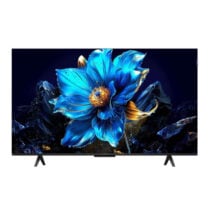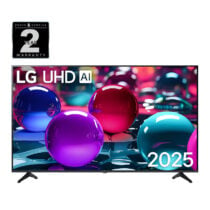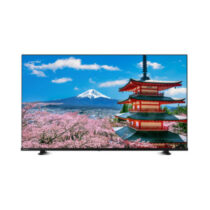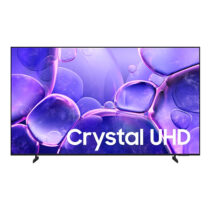TV Buying Guide.
TVs and audio systems are constantly evolving with new technology, making it seem complex. But choosing the right TV doesn’t have to be difficult.
This guide simplifies everything, helping you understand TVs and audio systems to find the best fit for your home. With 4K UHD TVs, 8K Smart TVs, and streaming content, now is the perfect time to explore the world of TVs.
TV Resolution
What is TV Resolution?
TV resolution is about the number of tiny dots, called pixels, that make up the picture on your screen. More pixels mean a sharper and more detailed image. Modern TVs use advanced technology to improve colors and contrast, giving you a stunning picture.
Why Do Extra Pixels Matter?
More pixels make your TV picture clearer and more detailed. This is because there are more tiny dots working together to show a better image. You’ll notice the difference, especially with 4K content from services like Netflix and Amazon. To enjoy 4K, you need a 4K-compatible player or streaming service.
What is 4K?
4K, also known as Ultra HD, is the next level of screen resolution, with over eight million pixels. This means more details and brighter colors on your screen. In simple terms, a 4K TV gives you four times the detail of a regular Full HD TV, making your viewing experience much more immersive.
What is 8K?
8K TVs are the next step up, offering even clearer and sharper images, especially on larger screens. They have 33 million pixels, four times more than 4K TVs. While there isn’t much 8K content yet, 8K TVs can enhance the quality of regular content to look better with upscaling technology.
Popular TV's
Shop NowSmart TV
What is a Smart TV?
A Smart TV connects to the internet, allowing you to access a wide range of online content. With built-in apps like Netflix, Spotify, and YouTube, you can stream movies, music, and shows directly on your TV. Smart TVs often come with features like voice control through Google Assistant or Alexa and can be integrated into your smart home setup. Whether you have a Full HD, 4K UHD, or even an 8K TV, smart features make your viewing experience more versatile and enjoyable.
What is 4K Upscaling?
Not all content is available in 4K resolution, but 4K upscaling helps improve the quality of standard HD content. Upscaling technology takes lower-resolution content and enhances it to look sharper and more vibrant on a 4K TV. This means even non-4K shows and movies will appear more detailed and closer to true 4K quality. Many streaming services like Netflix offer a growing library of 4K content, making upscaling a valuable feature for a better viewing experience.
Best TV Display Technology
What is the Best TV Display Technology?
When researching TVs, you’ll often see terms like OLED, QLED, and LED. These refer to how the TV screen lights up and displays images. HD, 4K, and 8K refer to the image resolution.
What is the Difference Between OLED and LED?
The main difference between LED and OLED screens is how they light up and display images. LED TVs use LCD technology with an LED backlight, while OLED TVs don’t need a backlight because each pixel lights up independently. This allows OLED TVs to display perfect blacks and vibrant colors.
Is QLED or OLED Better?
QLED and OLED are two different technologies with their own strengths. QLED TVs, which use quantum dots, are typically brighter and better for well-lit rooms. OLED TVs, on the other hand, offer superior contrast and true black levels, making them excellent for dark rooms. OLED TVs are usually more expensive than QLED TVs.
What is a QLED TV?
QLED, or Quantum Dot Light Emitting Diodes, is a technology developed by Samsung. QLED TVs use special particles called Quantum Dots that enhance the brightness and color accuracy of the display. These particles glow when light shines on them, making the screen brighter and more vibrant. Shop QLED TV
What is a OLED TV?
OLED stands for Organic Light Emitting Diode. OLED TVs use organic materials to light up each pixel individually. This allows for incredibly thin and flexible screens with excellent color and contrast. OLED technology provides deeper blacks and a more immersive viewing experience. Shop OLED TV
What is an LED TV?
An LED TV uses Light Emitting Diodes to light up the screen. These small, energy-efficient bulbs create bright and vibrant images with excellent contrast. LED TVs are popular for their picture quality and power efficiency. Shop LED TV
Best TV Size For My Room
What’s the best size TV for my room?
Choosing the right TV size for your room can seem overwhelming due to the wide range of options available. To simplify, a general rule of thumb is to multiply the distance between your seating area and the TV by 1.5 to 2.5. This measurement, in feet, will give you the ideal diagonal size of the TV.
This guideline is recommended because your TV should take up a significant portion of your field of vision to create an immersive viewing experience. For instance, if you sit 6 feet away from your TV, you should consider a TV that is around 55 inches.
Here’s a quick reference guide to help you choose the best TV size based on your viewing distance:
Refresh Rates and Response Rates
What are Refresh Rates?
Refresh rates refer to how often the image on your TV screen is updated per second. This helps create a smooth and seamless viewing experience. Refresh rates are crucial, especially if you enjoy watching fast-moving content like action movies or sports.
Refresh rates are measured in hertz (Hz). For example, a TV with a 60Hz refresh rate updates the image 60 times per second. If a TV has a 120Hz refresh rate, it updates the image 120 times per second, providing an even smoother picture.
Is a Higher Refresh Rate Better?
Yes, a higher refresh rate generally means clearer and smoother images. It reduces motion blur, making the viewing experience more enjoyable, especially for fast-paced content. If you’ve ever seen an older movie with a jumpy picture, that’s due to a low refresh rate. Higher refresh rates help eliminate this issue.
What are Response Rates?
Response rates measure the time it takes for your TV to react to input signals, such as those from a game console. This is different from refresh rates, which deal with how often the image is updated. A lower response rate means quicker reactions, which is essential for gamers, especially in competitive games.
TVs with a dedicated Game Mode can improve response rates by reducing internal processing, making the gaming experience more responsive. This is also important for home theater systems, as a high response rate ensures that audio and video stay in sync, preventing issues like mismatched dialogue.
Types of HDMI
What are the types of HDMI?
Most people are familiar with the standard HDMI cable, which connects devices like DVD players, game consoles, and more to your TV. HDMI cables can transmit both uncompressed video and digital audio, making them essential for modern home entertainment systems. With advancements in technology, HDMI has improved with features like ARC and eARC.
What is HDMI ARC?
HDMI ARC stands for Audio Return Channel. It allows two-way communication between your TV and audio devices like soundbars and receivers using a single HDMI cable. This reduces cable clutter and simplifies your setup.
For example, if you have a soundbar, you can connect it to your TV via an HDMI ARC port. This cable then transmits audio from all devices connected to your TV, such as game consoles, to the soundbar. This eliminates the need for an additional audio receiver and simplifies your home theater setup.
What is HDMI eARC?
HDMI eARC, or Enhanced Audio Return Channel, is an upgraded version of HDMI ARC. It provides the best possible audio quality from your TV, including full-resolution audio signals. eARC supports advanced audio formats like Dolby Atmos and DTS:X, offering immersive 3D surround sound.
With eARC, your HDMI devices can connect directly to your TV, which then sends uncompressed, high-quality audio to your soundbar or receiver through the eARC port. This ensures you get the best sound experience from your home entertainment system.























